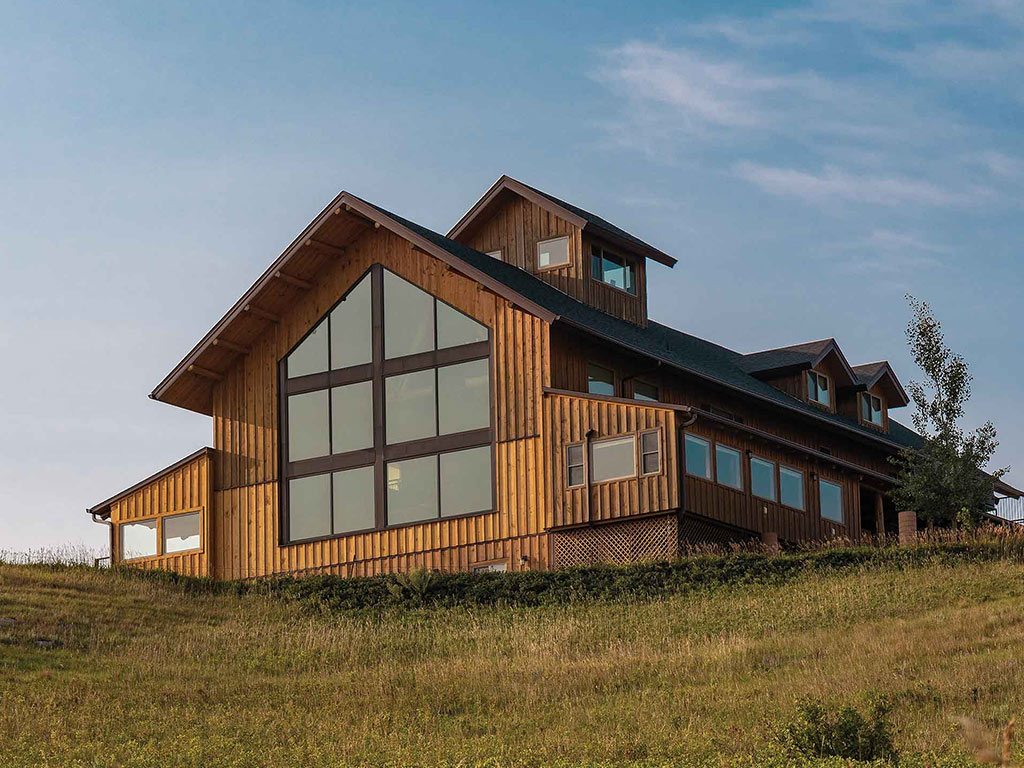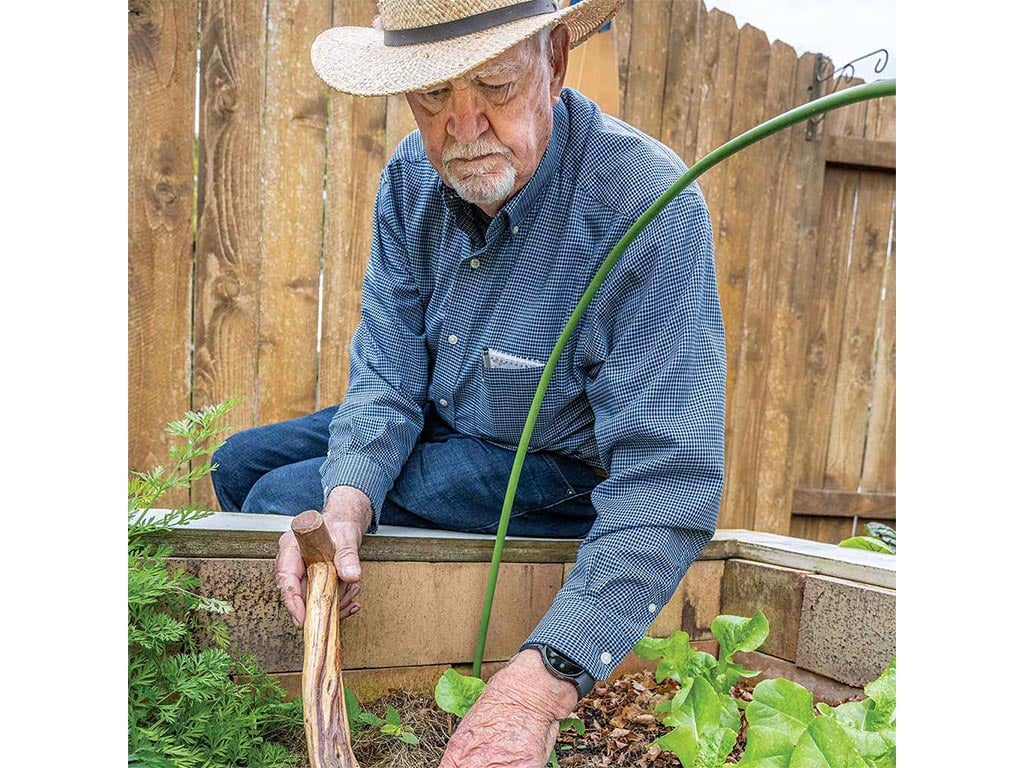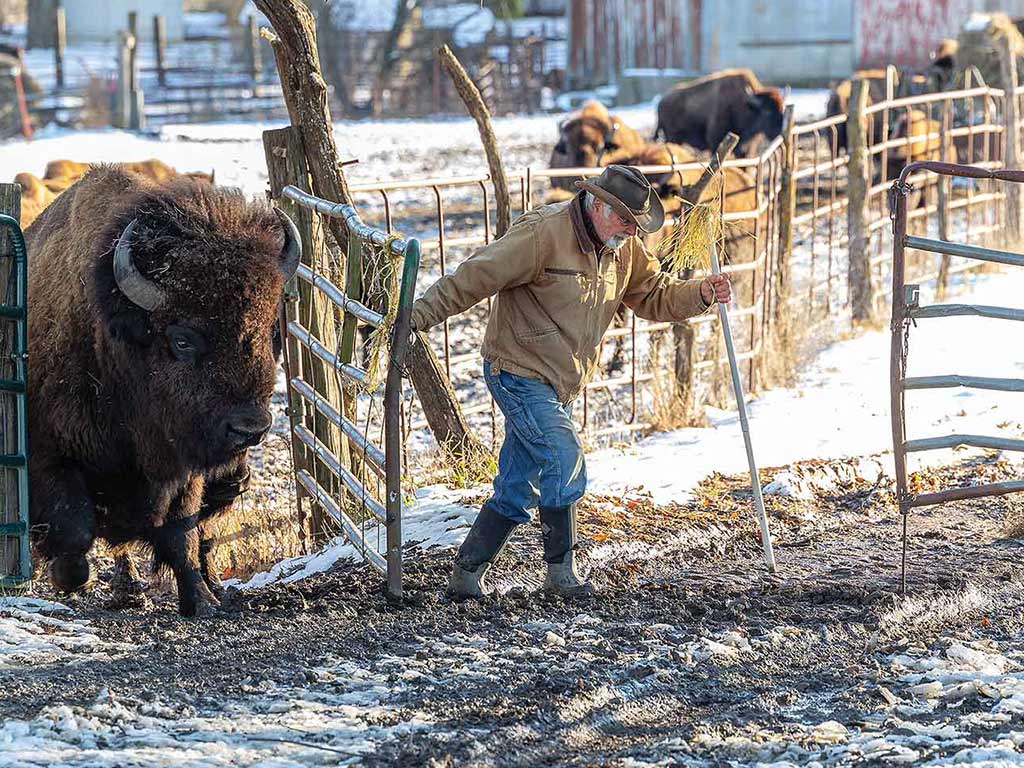Agriculture, Livestock/Poultry April 01, 2024
Living History
A rancher champions the American bison's enduring legacy.
by Bill Spiegel
For more than 50 years, Ed Dillinger was a high school basketball referee and football official in his native state of Kansas. Officiating, the 87-year-old reasons, was an exercise in discipline. It required him to see the action unfold before his eyes, yet still be cognizant of the activity surrounding him.
Raising bison is not dissimilar.
"When you're around bison, or any other wild animal, their survival depends 100% upon their awareness of your presence," explains Dillinger, whose ranch is near Westmoreland, Kansas, in the heart of the tallgrass prairie. "In officiating almost any sport, you have two jobs. One, focus on the ball, or where the action is. The other, focus on the other stuff.
"That," he explains, "is how you facilitate the game."
At nearly one ton in mass and a towering six-feet tall, bison bulls are the largest mammals in North America. Bison cows weigh about half that size. The animals can run nearly 35 miles per hour and jump over six feet.
Those animals, Dillinger says, demand respect.
With his wife, Susan; son, Kyle and daughter-in-law, Kellie, he owns and operates Lazy Heart D Ranch, which features bison, Beefmaster cattle and bloodlines for Morgan horses dating back nearly 100 years.
Dillinger had a circuitous professional career that included teaching physical education and driver's ed in Wichita, Kansas, and stints as a strategic consultant and facilitator for The Institute of Cultural Affairs in Taiwan, India, and Zambia. After a decade overseas, Dillinger moved back to Kansas to teach special education. He bought the ranch that became Lazy Heart D Ranch in 1993.
"I was thinking, working with special needs kids, that I wanted to set up a Grandpa farm," Dillinger recalls.
"When I was a kid, everybody had a relative with a farm you could visit. Today, you have kids and grownups who have never been to a farm."
Before long, he began offering tours. "And then I thought, wouldn't it be cool if I had some bison out here?" he says.
Bison were once ubiquitous throughout North America, but predominantly based in the prairies of the High Plains.
"I didn't know anything about buffalo, except I knew who Buffalo Bill was. So I visited some ranches and put together a plan."
He bought three heifer calves in 1995, purchased three more the next year and never looked back.
With the help of his family, Dillinger conducts about 100 tours per year, offering guests a history of bison in Kansas, a hayrack ride across the 400 acres of Flint Hills pasture to where the 40-head herd grazes. Here, in the prairie where bison once roamed en masse, guests may feed the herd by hand. It is a rare opportunity to be so close to the massive beasts.
The Lazy Heart D guestbook register includes high school students from Germany, international student groups from nearby Kansas State University and a host of families, school groups, and civic organizations.
In lieu of charging admission for tours, Dillinger encourages participants to offer cash donations to a local care ministry or food bank. For school groups or youth groups, he asks teachers or leaders to have the kids take on a project that helps others.
"I'm building more fabric in the community," he explains. "We have kids doing a project for an agency they might otherwise not even know about."
Above. Ed Dillinger retired from teaching to establish a bison ranch near Westmoreland, Kansas, in 1995. The 87-year-old Dillinger offers nearly 100 tours per year. After nearly 30 years of raising bison, Dillinger has tweaked the handling facilities to ensure they are low-stress. The [third] picture is a bison leg bone used to tighten a barbed wire fence. [Last], the herd bull is nearly 6-feet tall and weighs two tons.
Ice Age animals. Not far south of the Lazy Heart D Ranch, the glacial boundary from the Ice Age ended, forming the Kansas and Blue rivers, according to the Kansas Geological Survey. Bison from the Ice Age era used glaciers as a land bridge to what is now America, and those animals (called "steppe" bison) share DNA with modern American bison, according to paleontologists at the Australian Center for Ancient DNA.
"I like to share that kind of historical context before we go out to see the herd," Dillinger says. "I want people to perceive a first-time experience, and one that is much greater than they might ever have thought about."
Although he sells both bison freezer meat and live animals at the annual Kansas Buffalo Association Fall Sale, the value of raising bison is measured not from dollars and cents but from the satisfaction of teaching and helping others.
"I don't know how much [these tours] contribute to the community. If you're satisfied with what you're doing, you don't need to measure it," he says. "So many of us are value conscious; value, in terms of ego. I get my reward when we finish a tour and someone tells me, 'that was great. We'll be back.'" ‡
Read More

RURAL LIVING
Hilltop Heaven
This lodge provides a glimpse of North Dakota prairie paradise.

RURAL LIVING, SUSTAINABILITY
A Mission of Abundance
Master gardener evangelizes the power of compost to food-insecure communities worldwide.





